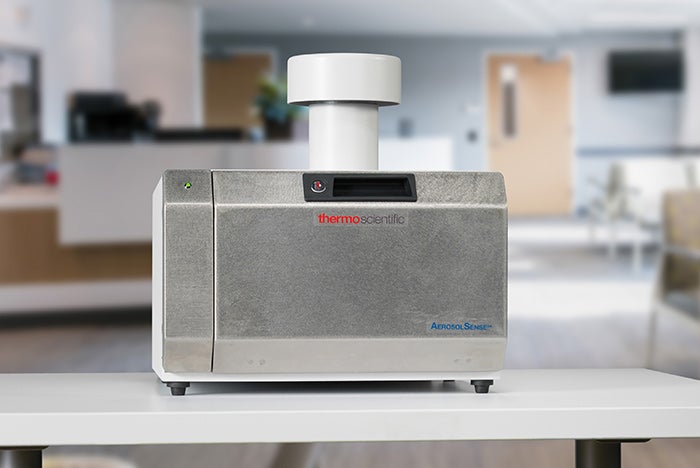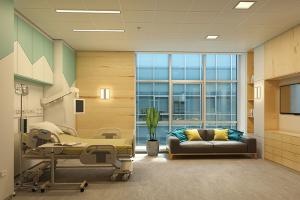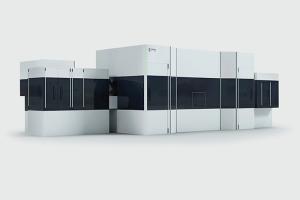Surveillance for post-pandemic preparedness

Environmental and occupational surveillance complements individual testing insight, enabling facilities to better assess the safety of their facility and communities.
Photo courtesy of Thermo Fisher Scientific
The world’s most contagious diseases are spread by in-air transmission. According to the World Health Organization, this is defined as “The dissemination of droplet nuclei that remain infectious when suspended in air over long distances and time.”
It’s the sneezing, coughing, talking or breathing from one infected person that releases pathogens into the air and is then inhaled by another person. Examples include influenza, tuberculosis and coronavirus.
Environmental and occupational surveillance
How can hospitals and other health care facilities be confident in their indoor air quality? How can they confirm if their safety protocols are working or if they need to be adjusted to keep patients and staff members safe? Environmental and occupational surveillance complements individual testing insight, enabling facilities to better assess the safety of their facility and communities.
While it was once believed that direct or very close contact was required for in-air pathogen transmission, research now indicates that in-air pathogens can travel a significant distance, including beyond the 6 feet of recommended distancing. Research also has shown that in-air pathogens can both linger in air for a significant amount of time and travel a significant distance, meaning that the presence of a person carrying the pathogen is not necessary for in-air pathogen transmission.
Although proper ventilation can reduce the risk of transmission of in-air pathogens, the specific conditions required for adequate ventilation are highly precise. According to recent research, those ventilation requirements may not be met in everyday facilities and rarely are met by opening windows.
Certain behaviors, like social distancing and mask wearing, can reduce the risk of transmission of in-air pathogens, but they do not eliminate it.
To determine in-air pathogen transmission risk within an indoor space, facility leaders and operators must ask these questions:
- What size is the space? Once it is understood that in-air pathogens can travel a certain distance and remain in the air for a certain amount of time, it becomes apparent that the risk posed by in-air pathogens should correspond to space size (among other factors).
- How many people are in the space? Once the size of a space is known, one can consider the number of people in the indoor space and, from there, continue estimating the risk of in-air pathogen transmission.
- How are the people behaving in the space? Building upon previous considerations of space size and space density, the next question relates to the behavior of the people in the space — because that behavior will both impact the in-air pathogens they potentially inhale and/or exhale. Are they exercising? Wearing masks? In close proximity to one another?
- How long are individuals occupying the space? Based upon all the previous factors, a crucial consideration is the duration people spend within a space. The more time people spend in a space, the more potential exposure they have to in-air pathogens. And vice-versa: the less time they spend, the less potential exposure.
- How often is the air in the space changed? The final factor to consider while assessing the risk of in-air pathogen transmission is the number of air changes, or how frequently the air in a space is rotated or changed with new air.
A new solution
The Thermo Scientific AerosolSense Sampler, a new pathogen surveillance solution, is designed to deliver timely and highly reliable insight into in-air pathogen presence, including Flu A/B, SARS-CoV-2 and/or RSV A/B, for monitoring air quality and improving facility safety protocols. It helps facilities professionals confidently protect employees and communities while maintaining business and operational continuity.
Among its features, the device:
- Monitors high transmission areas for improved risk assessment.
- Helps verify containment strategy effectiveness.
- Is lightweight for portability and requires minimal operator training.
- Is validated for Flu A/B, SARS-CoV-2 and/or RSV A/B, with a design that is intended to capture a wide variety of in-air pathogens.
References
- Infection Prevention and Control of Epidemic- and Pandemic-Prone Acute Respiratory Infections in Health Care; Geneva: World Health Organization; 2014. Glossary, which is available here.
- SARS-CoV-2 Transmission from the Centers for Disease Control and Prevention, May 2021, which is available here.
Geoffrey Gonzalez, Ph.D., is employed by Thermo Fisher Scientific. To learn more about in-air pathogens and how to mitigate the risk they create, visit Thermo Fisher Scientific.




